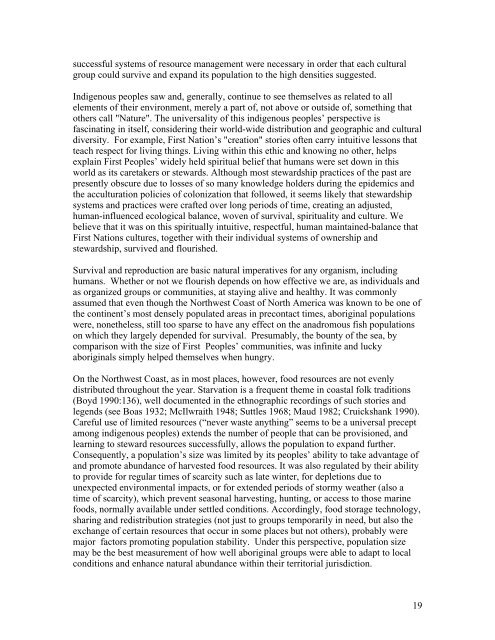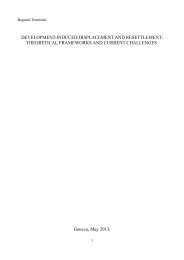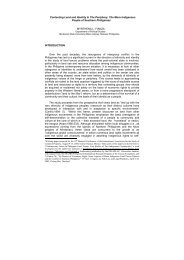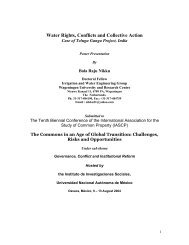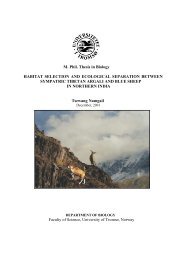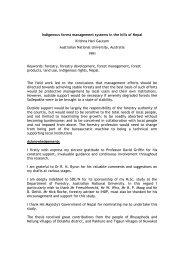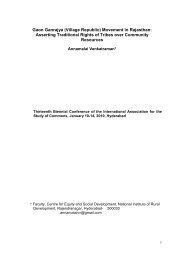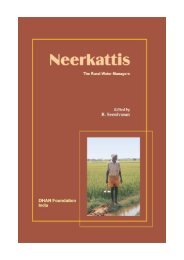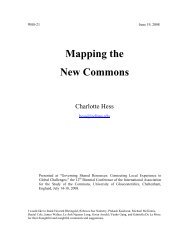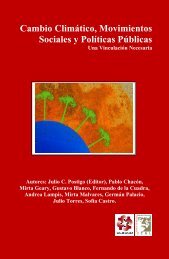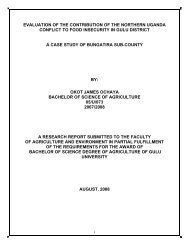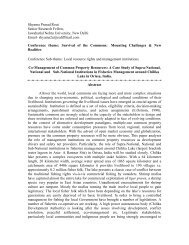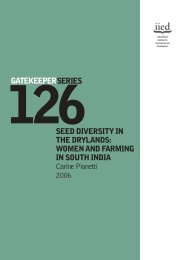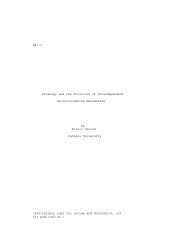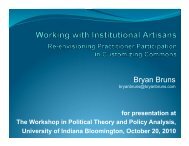Occupying the Land - Digital Library Of The Commons
Occupying the Land - Digital Library Of The Commons
Occupying the Land - Digital Library Of The Commons
Create successful ePaper yourself
Turn your PDF publications into a flip-book with our unique Google optimized e-Paper software.
successful systems of resource management were necessary in order that each culturalgroup could survive and expand its population to <strong>the</strong> high densities suggested.Indigenous peoples saw and, generally, continue to see <strong>the</strong>mselves as related to allelements of <strong>the</strong>ir environment, merely a part of, not above or outside of, something thato<strong>the</strong>rs call "Nature". <strong>The</strong> universality of this indigenous peoples’ perspective isfascinating in itself, considering <strong>the</strong>ir world-wide distribution and geographic and culturaldiversity. For example, First Nation’s "creation" stories often carry intuitive lessons thatteach respect for living things. Living within this ethic and knowing no o<strong>the</strong>r, helpsexplain First Peoples’ widely held spiritual belief that humans were set down in thisworld as its caretakers or stewards. Although most stewardship practices of <strong>the</strong> past arepresently obscure due to losses of so many knowledge holders during <strong>the</strong> epidemics and<strong>the</strong> acculturation policies of colonization that followed, it seems likely that stewardshipsystems and practices were crafted over long periods of time, creating an adjusted,human-influenced ecological balance, woven of survival, spirituality and culture. Webelieve that it was on this spiritually intuitive, respectful, human maintained-balance thatFirst Nations cultures, toge<strong>the</strong>r with <strong>the</strong>ir individual systems of ownership andstewardship, survived and flourished.Survival and reproduction are basic natural imperatives for any organism, includinghumans. Whe<strong>the</strong>r or not we flourish depends on how effective we are, as individuals andas organized groups or communities, at staying alive and healthy. It was commonlyassumed that even though <strong>the</strong> Northwest Coast of North America was known to be one of<strong>the</strong> continent’s most densely populated areas in precontact times, aboriginal populationswere, none<strong>the</strong>less, still too sparse to have any effect on <strong>the</strong> anadromous fish populationson which <strong>the</strong>y largely depended for survival. Presumably, <strong>the</strong> bounty of <strong>the</strong> sea, bycomparison with <strong>the</strong> size of First Peoples’ communities, was infinite and luckyaboriginals simply helped <strong>the</strong>mselves when hungry.On <strong>the</strong> Northwest Coast, as in most places, however, food resources are not evenlydistributed throughout <strong>the</strong> year. Starvation is a frequent <strong>the</strong>me in coastal folk traditions(Boyd 1990:136), well documented in <strong>the</strong> ethnographic recordings of such stories andlegends (see Boas 1932; McIlwraith 1948; Suttles 1968; Maud 1982; Cruickshank 1990).Careful use of limited resources (“never waste anything” seems to be a universal preceptamong indigenous peoples) extends <strong>the</strong> number of people that can be provisioned, andlearning to steward resources successfully, allows <strong>the</strong> population to expand fur<strong>the</strong>r.Consequently, a population’s size was limited by its peoples’ ability to take advantage ofand promote abundance of harvested food resources. It was also regulated by <strong>the</strong>ir abilityto provide for regular times of scarcity such as late winter, for depletions due tounexpected environmental impacts, or for extended periods of stormy wea<strong>the</strong>r (also atime of scarcity), which prevent seasonal harvesting, hunting, or access to those marinefoods, normally available under settled conditions. Accordingly, food storage technology,sharing and redistribution strategies (not just to groups temporarily in need, but also <strong>the</strong>exchange of certain resources that occur in some places but not o<strong>the</strong>rs), probably weremajor factors promoting population stability. Under this perspective, population sizemay be <strong>the</strong> best measurement of how well aboriginal groups were able to adapt to localconditions and enhance natural abundance within <strong>the</strong>ir territorial jurisdiction.19


